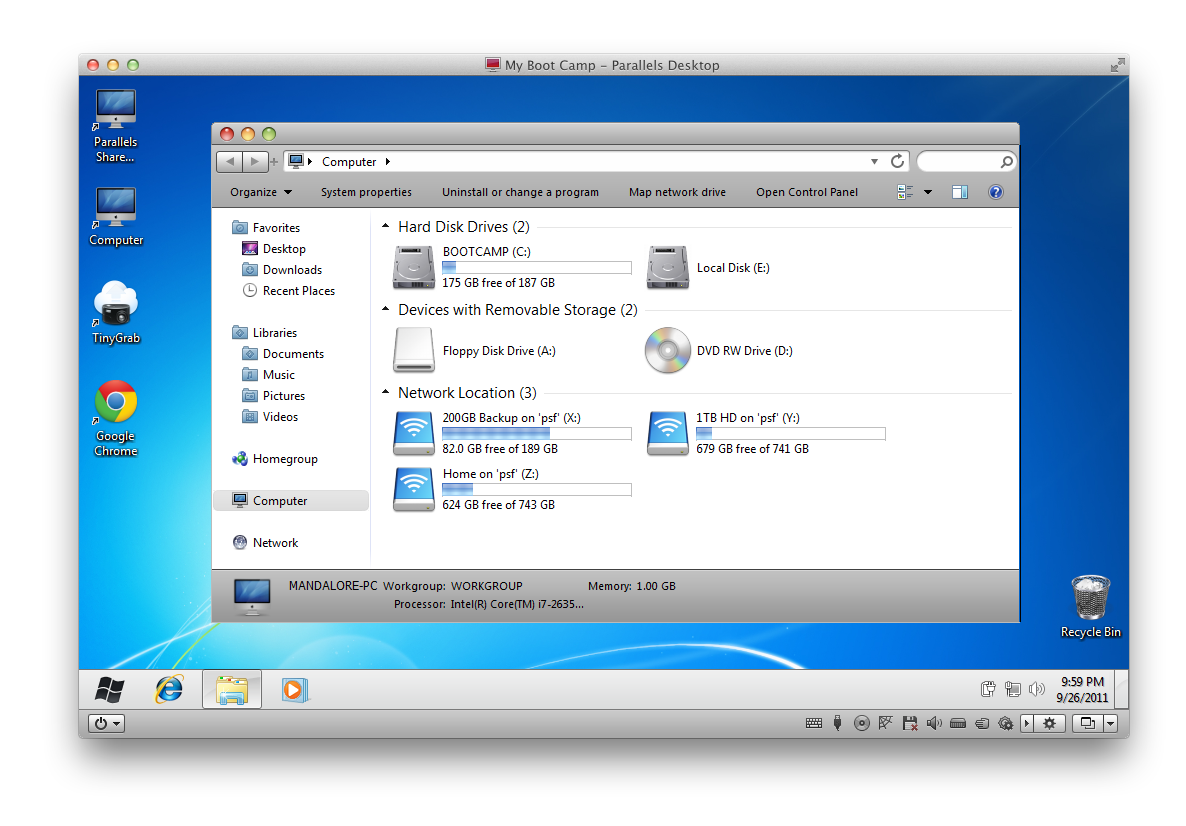

Magic Mouse 2, Magic Keyboard, Magic Keyboard with Numeric Keypad, and Magic Trackpad 2 have built-in rechargeable batteries. You can charge these devices by connecting them to a Mac or a USB power adapter using a Lightning to USB Cable.
Parallels For Mac Activation Key
Using Parallels Workstation? To regain control of the mouse in OS X (freeing it from the virtual machine), the default key command is Control-Option (they call it Control-Alt), and then you have to move the window to do what you wanted to do on your Mac. When you are ready to go back to Workstation, you have to remember to click inside the PC window to get back the PC cursor.
A simplified solution is to simply hit Command-H, which is the Hide command that we are already familiar with. Not only will the PC window disappear, but you automatically get the Mac mouse back. On return to the PC window, the PC cursor is automatically there waiting for you.
[robg adds: This trick is handy if you're running non-Windows virtual machines with Parallels. But if you're running a version of Windows in Parallels, make sure you install the Parallels Tools, as you then won't need this solution.
After logging into Windows, 'free' the mouse and select VM: Install Parallels Tools from the menu. This will launch a Windows installer (on Win2K, I had to manually open the CD image and launch it) that adds some key functionality to the virtual PC. The two biggest improvements are screen resolution and the mouse. The mouse in will now work seamlessly between OS X and the PC window, no keyboard use required. Move the cursor outside the PC window, and OS X owns it. When it's over the PC window, it belongs to the PC. Also, all the 'jerkiness' in mouse movement disappears.]
A simplified solution is to simply hit Command-H, which is the Hide command that we are already familiar with. Not only will the PC window disappear, but you automatically get the Mac mouse back. On return to the PC window, the PC cursor is automatically there waiting for you.
[robg adds: This trick is handy if you're running non-Windows virtual machines with Parallels. But if you're running a version of Windows in Parallels, make sure you install the Parallels Tools, as you then won't need this solution.
After logging into Windows, 'free' the mouse and select VM: Install Parallels Tools from the menu. This will launch a Windows installer (on Win2K, I had to manually open the CD image and launch it) that adds some key functionality to the virtual PC. The two biggest improvements are screen resolution and the mouse. The mouse in will now work seamlessly between OS X and the PC window, no keyboard use required. Move the cursor outside the PC window, and OS X owns it. When it's over the PC window, it belongs to the PC. Also, all the 'jerkiness' in mouse movement disappears.]
Keyboard Problems With Macbook Pro
Using Parallels Workstation? To regain control of the mouse in OS X (freeing it from the virtual machine), the default key command is Control-Option (they call it Control-Alt), and then you have to move the window to do what you wanted to do on your Mac. When you are ready to go back to Workstation, you have to remember to click inside the PC window to get back the PC cursor.
A simplified solution is to simply hit Command-H, which is the Hide command that we are already familiar with. Not only will the PC window disappear, but you automatically get the Mac mouse back. On return to the PC window, the PC cursor is automatically there waiting for you.
[robg adds: This trick is handy if you're running non-Windows virtual machines with Parallels. But if you're running a version of Windows in Parallels, make sure you install the Parallels Tools, as you then won't need this solution.
After logging into Windows, 'free' the mouse and select VM: Install Parallels Tools from the menu. This will launch a Windows installer (on Win2K, I had to manually open the CD image and launch it) that adds some key functionality to the virtual PC. The two biggest improvements are screen resolution and the mouse. The mouse in will now work seamlessly between OS X and the PC window, no keyboard use required. Move the cursor outside the PC window, and OS X owns it. When it's over the PC window, it belongs to the PC. Also, all the 'jerkiness' in mouse movement disappears.]
A simplified solution is to simply hit Command-H, which is the Hide command that we are already familiar with. Not only will the PC window disappear, but you automatically get the Mac mouse back. On return to the PC window, the PC cursor is automatically there waiting for you.
[robg adds: This trick is handy if you're running non-Windows virtual machines with Parallels. But if you're running a version of Windows in Parallels, make sure you install the Parallels Tools, as you then won't need this solution.
After logging into Windows, 'free' the mouse and select VM: Install Parallels Tools from the menu. This will launch a Windows installer (on Win2K, I had to manually open the CD image and launch it) that adds some key functionality to the virtual PC. The two biggest improvements are screen resolution and the mouse. The mouse in will now work seamlessly between OS X and the PC window, no keyboard use required. Move the cursor outside the PC window, and OS X owns it. When it's over the PC window, it belongs to the PC. Also, all the 'jerkiness' in mouse movement disappears.]